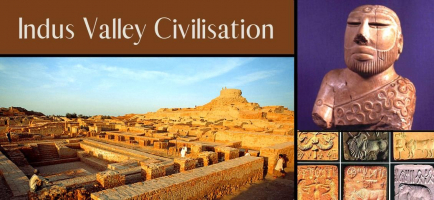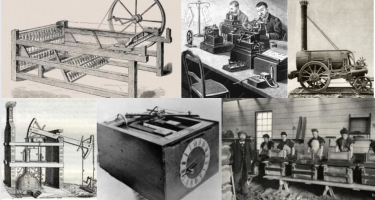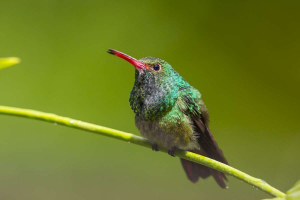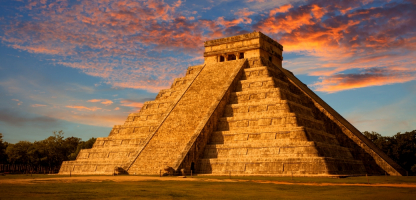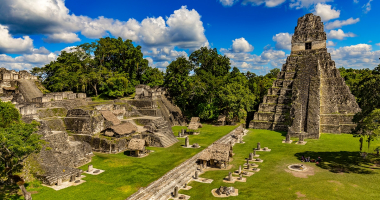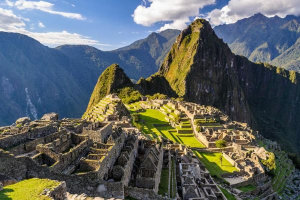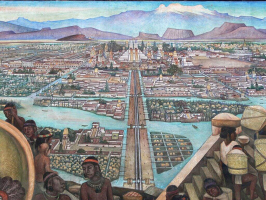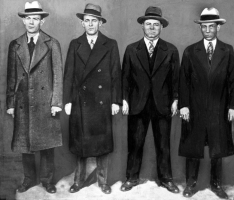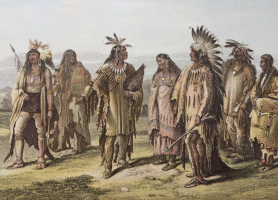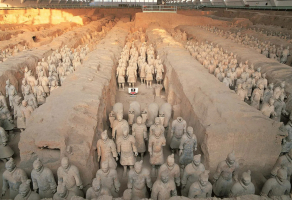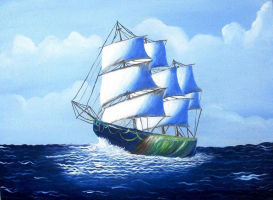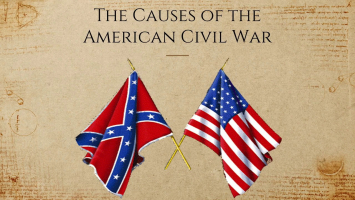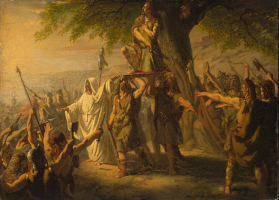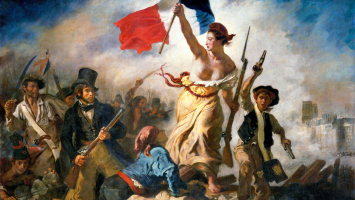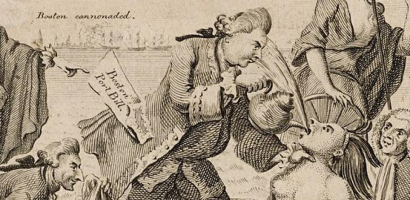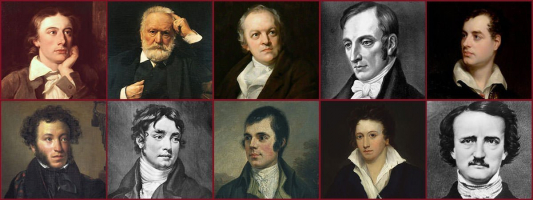Top 11 Incredible Inventions of the Maya Civilization
The Mayan civilization is widely recognized as the most sophisticated and technologically advanced culture in the world, not only in Mesoamerica. This ... read more...heterogeneous collection of indigenous people lived in the countries of Belize, Honduras, El Salvador, Mexico, and Guatemala. Their reign lasted around 2000 years, although their most successful time, known as the Classic Period, was from 300 A.D. to 900 A.D. This article will discuss some of the most astounding inventions of the ancient Mayan civilization.
-
People knew the idea or concept of nothing or having nothing in the "old world" and around the world in general. However, the fundamental concept of zero (which we now take for granted) is a comparatively modern 'innovation.' According to current thinking, zero was fully created in India in about the 5th century AD in the "old world" (458 AD). Although it is debatable whether this knowledge was received from the Babylonians. In any event, the contemporary concept of 'zero' was clearly defined by the great Brahmagupta by 628 AD. It did not reach Europe until the 12th century.
Surprisingly, the Mayans developed their own idea of 'zero' at least 100 years before India, in around 350 AD. To be honest, this is astounding given that the continents of America were isolated from the 'old world' not just due to physical separation, but also due to their comparatively recent occupancy of the territories in comparison to 'old world' civilizations.
Prior to this, scholars had difficulty executing basic mathematical computations. It genuinely was a 'barrier' to the development of advanced mathematics such as calculus, complex equations, and, eventually, computers.Despite the fact that some earlier civilizations, including the Sumerian, had already created a "zero" as a placeholder in the third century BC (i.e. to denote no units in the hundreds, tens, etc). It was a genuine application of the number zero.
For example, one of the oldest known civilizations, the Mesopotamians, appeared around 3500 BC, as opposed to early estimates of the Mayan Civilisation beginning around 2600 BC.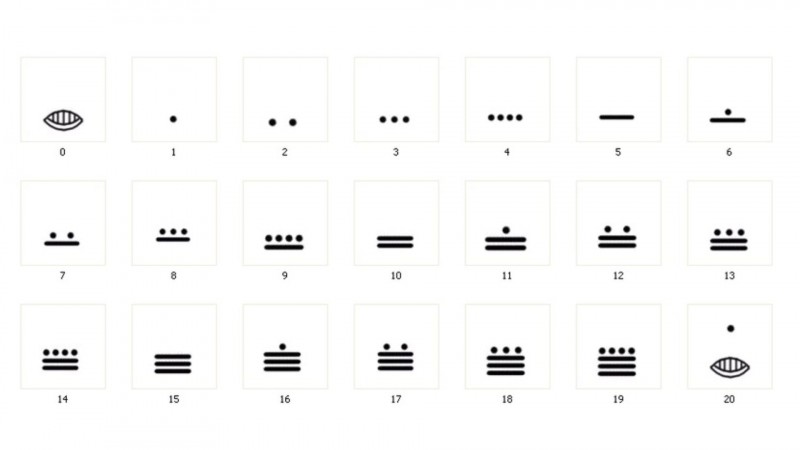
Mayan Numerical system. - Immanuel Giel/Wikimedia Commons 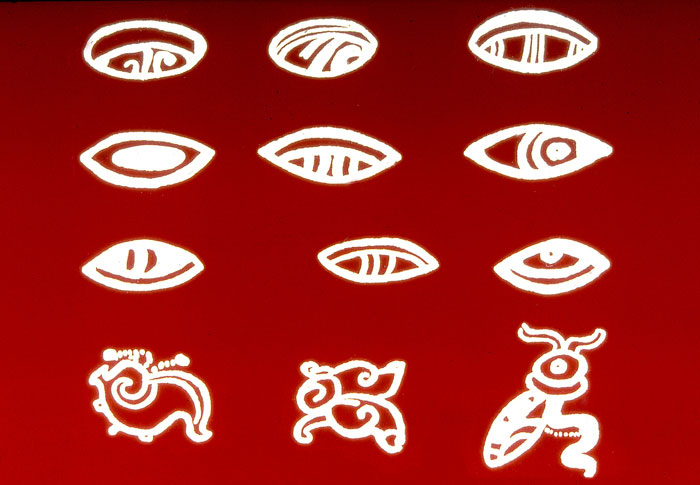
The Maya and Zero - Mexicolore -
Although it is generally accepted that the vulcanization technique, invented by Charles Goodyear somewhere about 1840, was what made rubber useful, this may not be totally accurate.
Around 1600 BC, the Mesoamerican societies of the Mayans and others were able to create their own method. They seem to have been able to combine regular latex with other vegetal materials to create a type of elastic from it.
It indicates that the procedure utilized vine juice to create the elastic shape. In order to play a very violent game of ball in specially constructed and planned ballcourts, they used this to create items like "bouncy balls."
To pay homage to their gods, these ballcourts were typically created at the base of their sacred sanctuaries. Each court has a large playing area with a stone loop fixed on the divider to one side.
The game, known as 'Pok-A-Tok,' was utilized to settle disputes between warring groups and noblemen as well as for amusement and religious devotion. However, the stakes were great, as defeat may result in the losing team's leader (or entire team) being sacrificed to the gods.With a rubber ball and some basketball and football elements, "Pok-A-Tok" was a game. At each end of the court, there was a stone hoop that the ball had to try to pass through. However, players could only use their thighs and hips to pass the ball and shoot it.
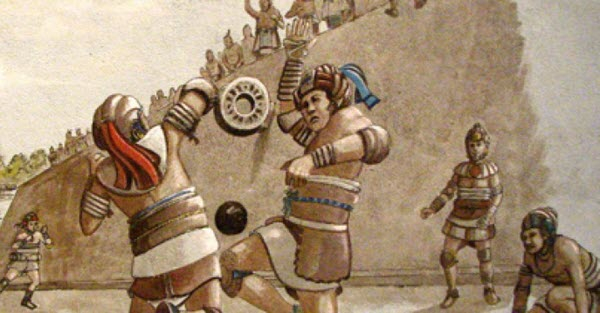
mypapalote -
The Maya developed the most sophisticated type of writing of all the ancient Americans, known as "glyphs." Glyphs are used to visually represent or characterize a word, sound, or even a syllable. Approximately 700 different glyphs are thought to have been employed by the Maya, and remarkably, 80 percent of their language is still understandable today.
The Maya frequently inscribed information about their past and accomplishments on pillars, walls, and large slabs of stone because they were aware of them. They also published books on a wide range of topics, including gods, daily life, their leaders, and more. These fan-shaped books were fashioned of bark and folded. Unfortunately, many of the books were burned because the Spanish believed they showed the devil and demons. Luckily, a few have made it through.
The Maya script, also referred to as the written language, is acknowledged as Mesoamerica's most complete writing system, and it was used to chronicle a large portion of Maya history. These engravings can be dated to the third century BC, according to a recent study. This would make the Maya responsible for the development of writing in Mesoamerica and one of only three known ancient civilizations - the others being China and Mesopotamia - where writing developed independently.
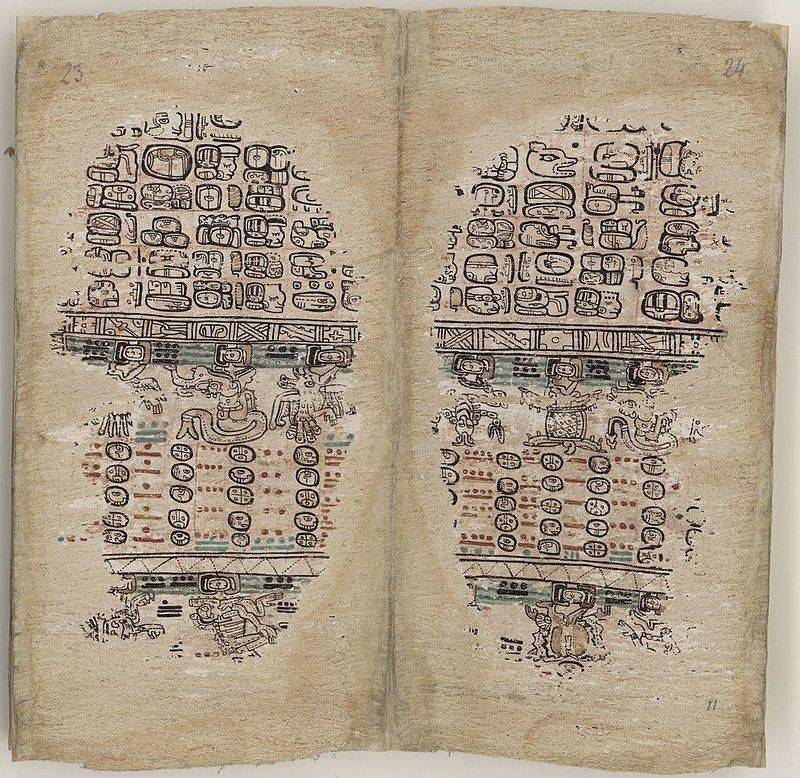
The last two pages of the 'Paris Codex' one of the few surviving Mayan books. - Bibliothèque Nacionale de France/Wikimedia Commons 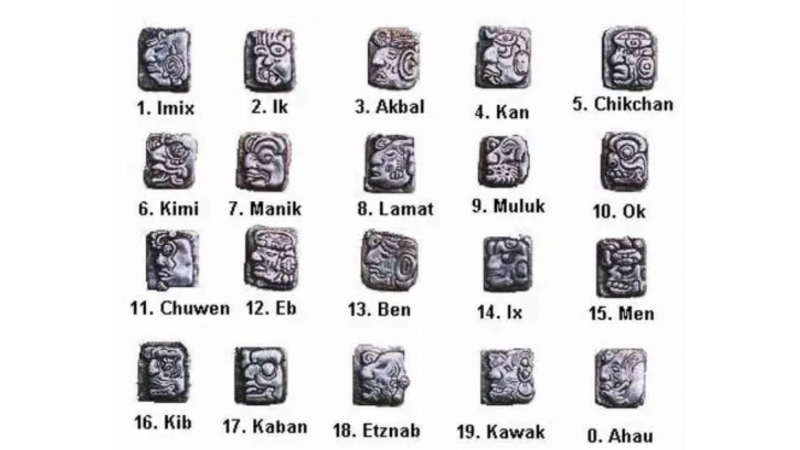
A Mayan hieroglyphic - Wikimedia Common -
Chocolate, everyone's favorite sweet treat, was created very early in Mayan society. They were able to create a beverage from crushed cocoa beans that were so highly valued that it was frequently used as money.
Between 250 and 900 AD, people began to realize that aged, simmered, pulverized, and blended cocoa beans tasted incredibly good. Even a "fiery" variation was created by adding stew peppers and cornmeal
They frequently poured liquor from one cup into another until a foamy froth was visible on top.
Although it sounds as tasty as modern versions, it would be unrecognizable to us today. In reality, the name "chocolate" is derived from the Mayan word "xocolatl," which means "bitter water."
Unsurprisingly to us today, the Mayans regarded chocolate so highly that they considered it a sort of "food of the Gods." Images of cocoa pods are frequently found painted on the walls of stone temples and other Mayan artifacts, typically depicting their gods ingesting it.
Cocoa was frequently eaten during religious services and wedding receptions. Cocoa could be enjoyed by all Mayans, regardless of social standing.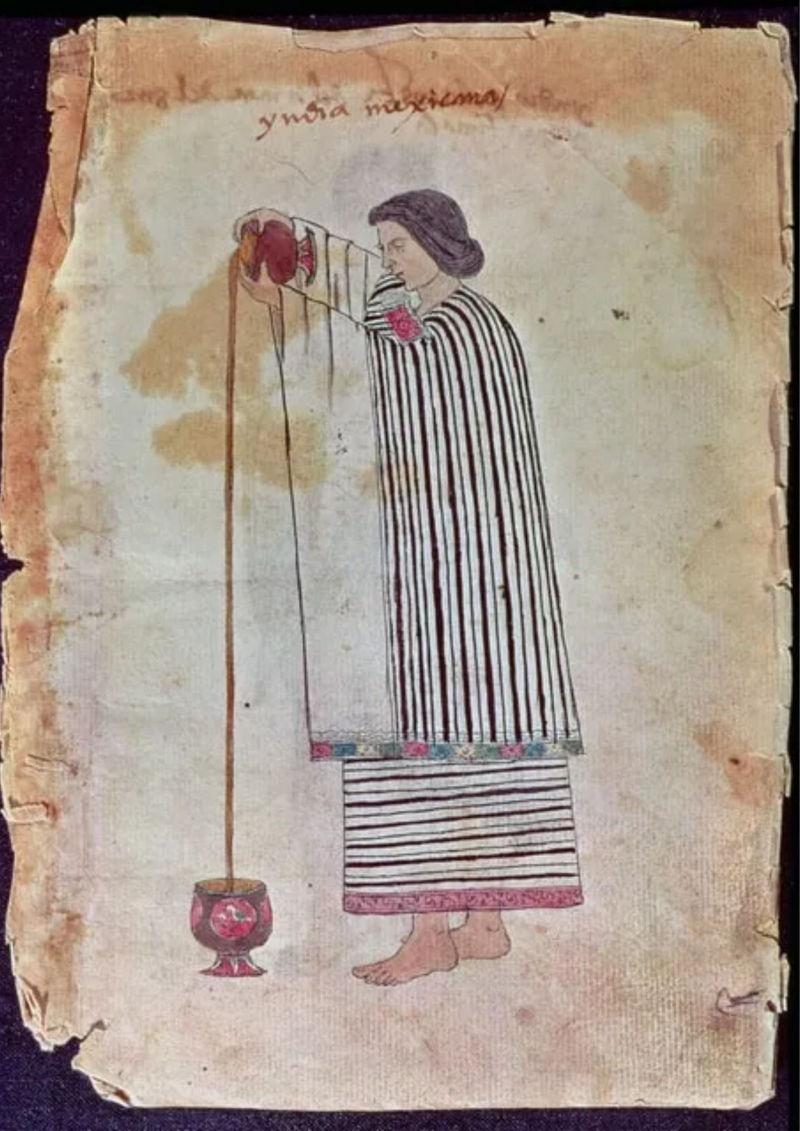
A Woman Pouring Chocolate from One Vessel to Another - Wikimedia Common 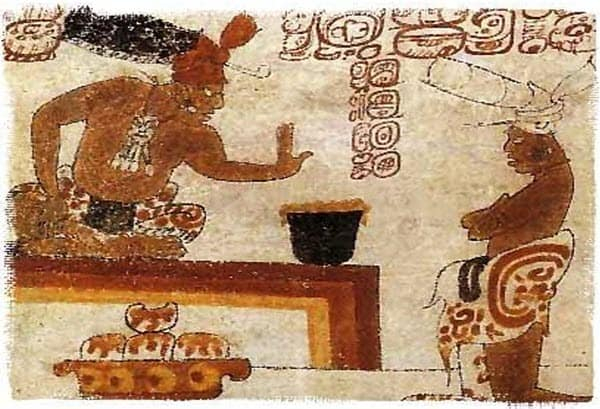
ancienthistorylists -
The well-known Mayan calendar was based on a Mesoamerican date system. The Maya, on the other hand, were the ones who standardized this method into a contemporary calendar.
The Tzolkin (divine timetable), the Haab (common calendar), and the Long Count are the three distinct date frames used by the Maya calendar. To produce 260 separate days, the Tzolkin combines a cycle of 20 named days with another cycle of 13 numerals. There are other ideas for the 260-day Tzolkin, including its foundation on the human growth timeline, the district's agrarian system, and the position of the planet Venus.
The Haab was a 365-day sun-based calendar. It consisted of a year and a half, with 20 days in each month, plus an additional five days known as Wayeb that were seen as a perilous period.
A non-repeating calendar known as the Long Count began at the beginning of the Mayan era. To align the calendar with the presumed 360 days in a year, it used a base 20 and base 18 counting system to tally individual days.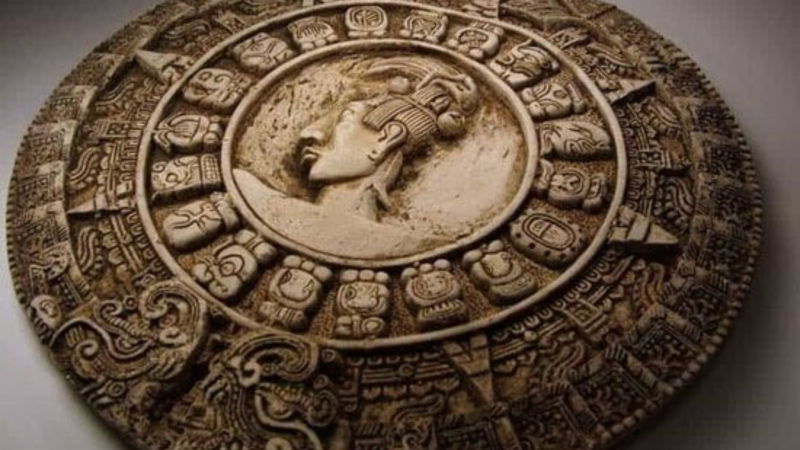
A Mayan calendar - Wikimedia Common 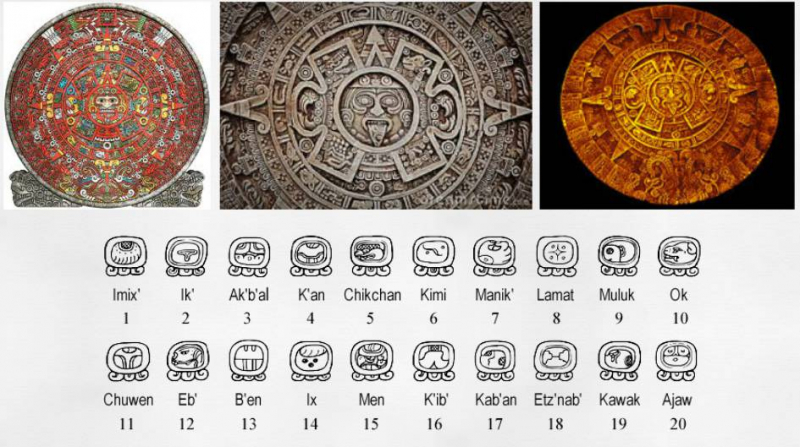
aztecandmayan -
There are hundreds of stations that research the sky, and the movements of the sun, moon, and other celestial bodies are dispersed over various geographical places. To examine the universe beyond our own, scientists have created powerful telescopes that can pierce the surface of cosmic objects. The Mayan culture was the source of this inspiration.
The astronomy and gods of the cosmos attracted the Mayans. They were attempting to comprehend the regular motions of the sun, moon, and stars. They attentively observed the cycles of the sun, the shifts in the seasons, and other events because they lacked sophisticated and advanced technology.
They saw gods moving across the sky to the underworld and other heavenly locales as represented by the movements of the stars and planets. They thought that Earth was immovable and that gods could be heard communicating to them from other heavenly bodies. Knowing their cycles and meanings was therefore of utmost significance to them.
The most significant deity in their pantheon, according to Popol Vuh, their sacred scripture, was the sun god of Kinich Ahau. Some people even held the view that particular dynasties were the direct offspring of the sun. They patiently awaited the solstices, eclipses, and equinoxes of the sun to observe and predict them.The Moon God, or Ix Chel, was equally important, depicting a lady or rabbit, and was generally associated with fertility and birthing. Venus was a significant planet to Mayan astronomers. They waged wars and offered slave sacrifices based on Venus's position in the night sky.
Based on similar discoveries, they devised the calendar and sundial for telling time, which almost exactly corresponds to today's terms.The Maya observed the celestial bodies and kept records of how the sun, moon, Venus, and stars evolved. Despite the fact that the Haab year had just 365 days, they recognized that a year was slightly longer than 365 days and calculated it to be 365.2420 days (the true approximation is 365.2422). This is more precise than the Gregorian calendar's estimate of 365.2425, indicating that the Maya calendar was more accurate than ours.
2,392 days were equal to 81 lunar months according to Maya astronomers' calculations. This estimates the lunar month to be 29.5308 days long, which is astonishingly close to the current estimate of 29.53059 days. Additionally, they calculated Venus' 584-day cycle, with only a small two-hour discrepancy.
The Maya documented celestial data like obscuration, or the movement of one planet in front of the other, as they studied Jupiter, Mars, and Mercury. Astronomers in the Maya culture were far more skilled and advanced than those in Europe.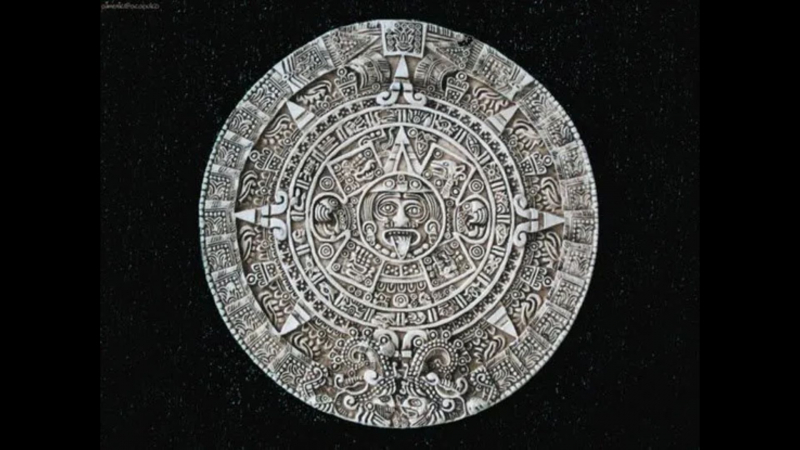
Mayan Astrology - Wikimedia Common 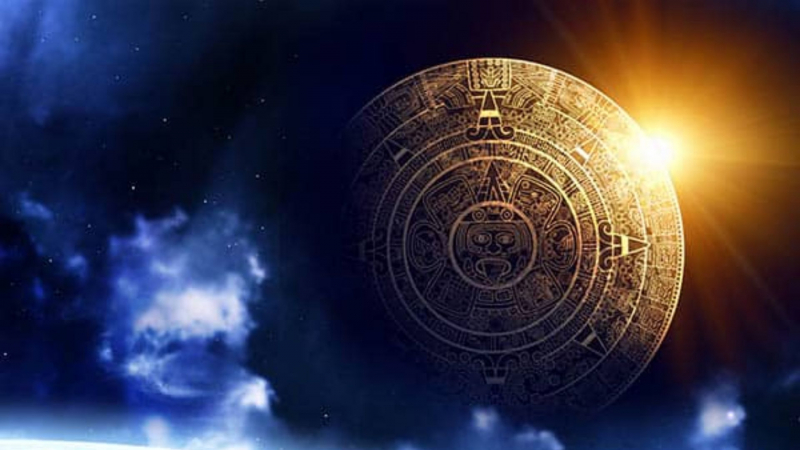
ancienthistorylists -
Mayan art is present in various sizes and scales of sculptures, paintings, murals, pottery, and other art forms. It was created as a result of conflict between the Yucatan Peninsula and the Olmec civilization and took on a life of its own.
Mayan artists created carvings in wood, stucco, clay, bones, shells, stones, and other materials during the first millennium B.C. Following that, they promoted royal structures and the remains of the kings and queens of Tikal, Palenque, Copan, etc., on orders from the monarchs. They soon started decorating temples as gifts for their gods.
Mayan artists primarily depicted their kings and magical beings. The royal family was carved sitting, holding objects, and interacting with one another. Stone tools were used to carve deities, slaves, ladies, and lords into limestones or volcanic tuffs. They painstakingly cut and polished the surfaces, but it took a long time.
To the Mayans, jade represented new beginnings. As a result, they were etched on jades to be worn as amulets by emperors, deities, and graves to ensure their survival in the afterlife. Similarly, ornately carved wooden statues were placed on temple doorways and rafters. However, due to the humid tropical climate, only a few such pieces remain.Mayan painters' mastery is evident from the intricate motifs on burnt clay. Their lifelike and colorful figures were incredibly expressive, depicting everything from family member graves to panels of deities dressed as humans. Additionally, the intricate carvings on clay containers and incense burners are stunning examples of their talent.
One of the most intriguing discoveries in the world, pyramids command much attention for their exterior. A clear illustration of their art may be seen in the construction, murals, hieroglyphs, and intricate detailing of each pyramid block.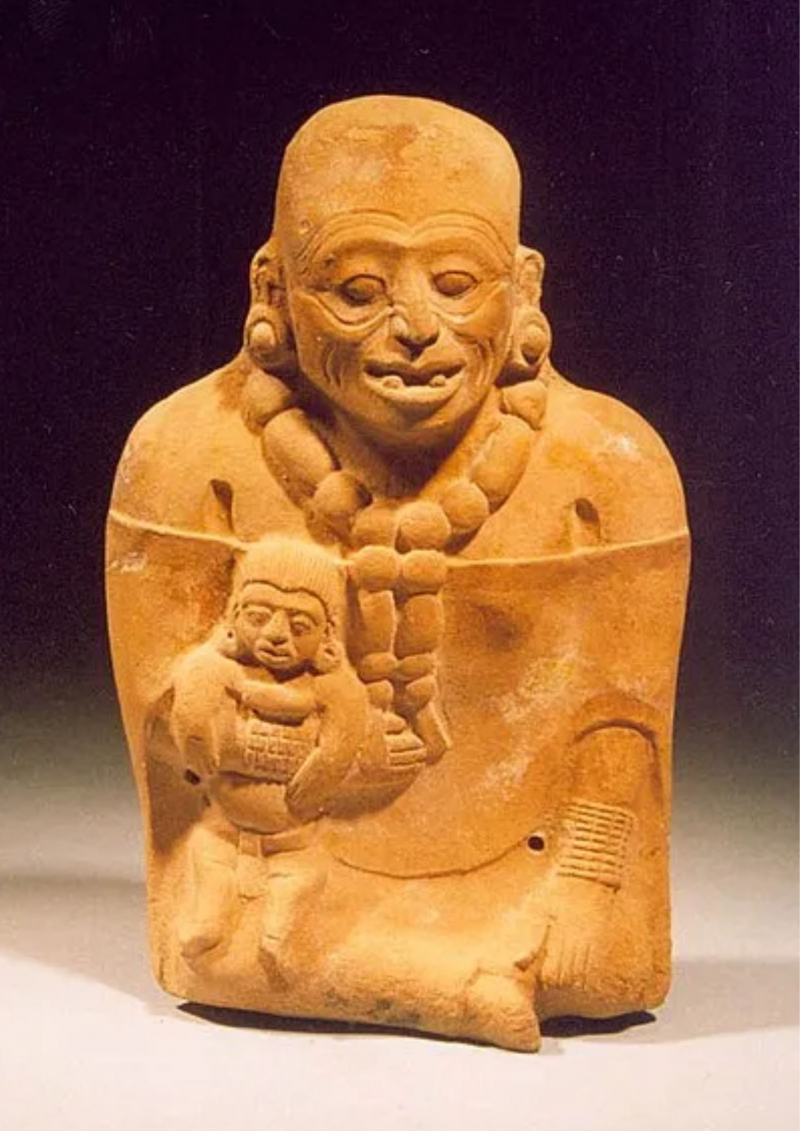
Mayan Sculpted Mother With a Child - Wikimedia Common 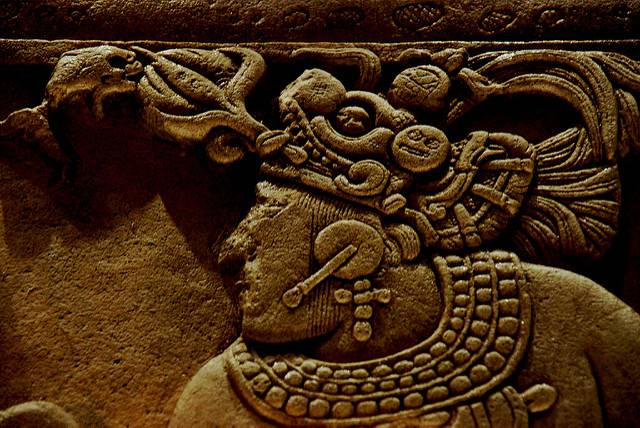
Adam and Tess/Flickr -
The use of chemicals that change consciousness or cause hallucinations varied across Mesoamerican civilization. According to a study, the ancient Mayans used dried toad skins and mushrooms in their rituals, rites, and cures.
The ancient Mayas reportedly drank balché, a concoction made by infusing honey with the bark of Lonchocarpus longistylus. It was a common beverage enjoyed during rituals involving communication with the dead. The mixture's psychedelic qualities caused a brief shift in awareness.
The spirits were informed of problems, often unexplained ones like severe weather, misfortune, or warfare. It was a divine method of prophecy. Additionally, they chewed tobacco and injected ritual enemas laced with alcohol or psychotropic chemicals in an effort to hasten the onset of a trance state.
Another alcoholic beverage prepared by fermenting the maguey plant's sap was called chi or pulque. Vessels stamped with the glyph "chi" were made by various pottery works from the Classic Mayan period. Sacred mushrooms, now known as modern magic mushrooms, were also consumed, along with hallucinogenic cacti and dried frog skin.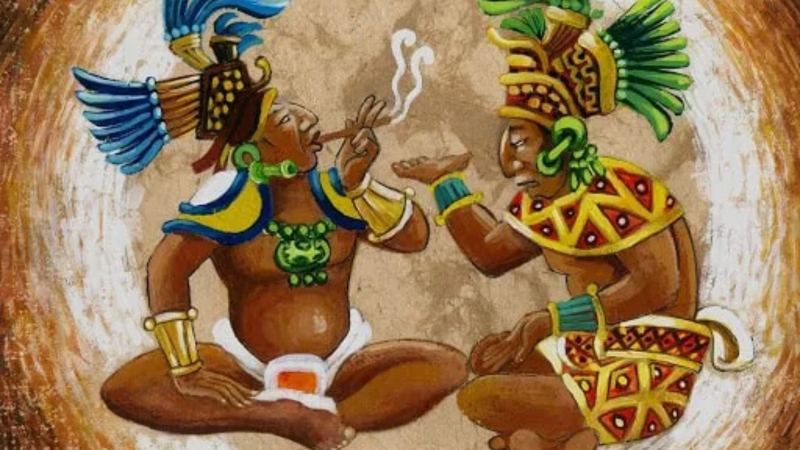
Mayans Consuming Tobacco in a Ritual - Wikimedia Common 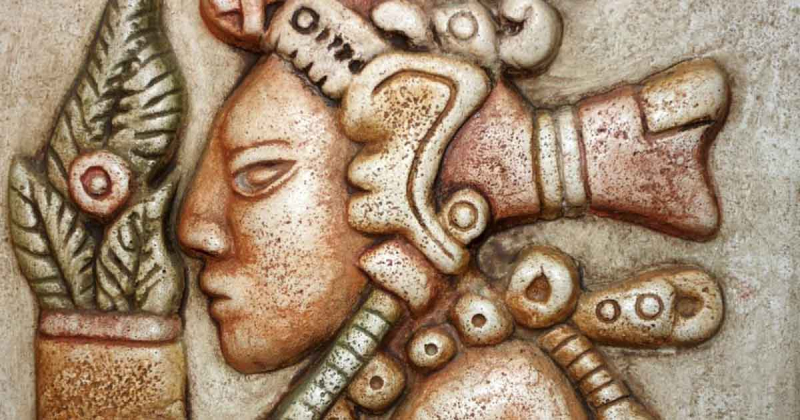
Ancient Origins -
In the ancient Mayan states, as the leaders rose to power, so did their legal systems. Halach Uinic and his council issued them under any of the circumstances. The judges who heard and decided on all civil and criminal cases were known as batabs.
Their legal system imposed severe, brutal penalties, with the death penalty being the most frequent one. Capital punishment was attributed to significant crimes that displeased Gods, including treason, rape, murder, adultery, arson, and incest.
The criminals would typically toss the victims off a cliff while strangling them with a rope or dropping heavy objects on their heads and necks to instantaneously murder them. The Mayans made a distinction between unintentional and intentional crimes, and the former required making amends or selling the victim's family a slave.
Because cutting one's hair short was considered a symbol of shame, petty criminals had their hair cut short. Instead of executing them, they were taxed more and sent to the army. Any child who committed a crime became a slave for his misbehavior.
Similarly, depending on the nature of the offense, temporary slavery or slavery for life was another penalty. Another type of punishment was the confiscation of property and auctioning it off. Only a serious crime would warrant such a punishment.
As a result, the Mayan laws were strict, sustaining a civilized society for many years. It serves as a model for present standards because it promotes the gathering of evidence and the use of judges to decide on a case, not to mention the distinction between accidental and purposeful homicide.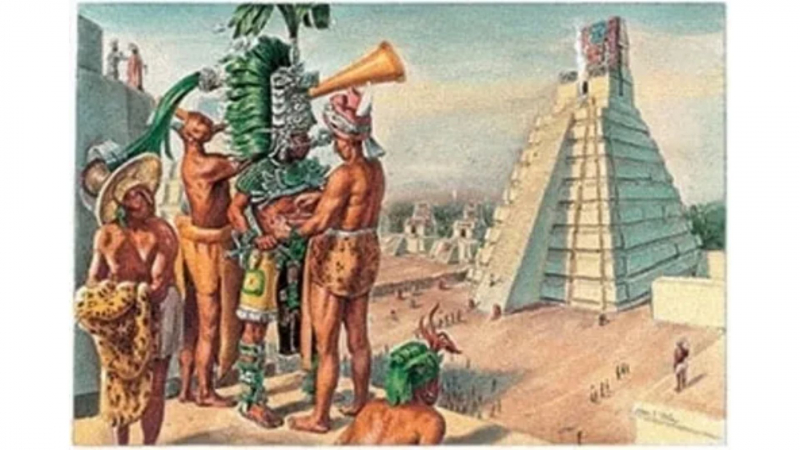
Law and Order in Mayan Civilization - Wikimedia Common 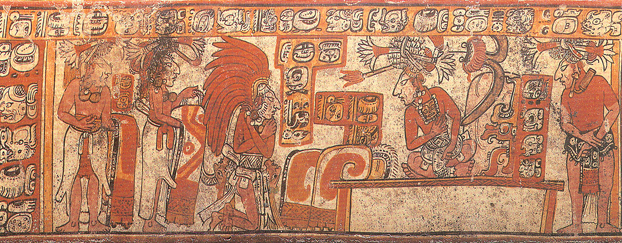
Maya Law - Exhibit - Aztec and Maya Law - Tarlton Law Library at Tarlton Law Library -
The Mayan culture invented ball courts in addition to the ball and ball games. A ball court can be found in almost every Maya ruin. In fact, more than 60% have been discovered in the previous 20 years, with over 1300 recognized.
Although the courts vary in size, their construction is consistent throughout a tight alley with horizontal, vertical, and sloping walls on either side, creating a distinctive I-shape. Aside from ball sports, the ceramics depict a wrestling match taking place on these courts.
Furthermore, these courts were also locations for large feasts for the people, however, it is unclear if they were held in the form of ball games or any other event. They were not just places of the show, but also of ritual. Their presence in the city's sacred vicinities attests to their importance as a Mayan asset.
Ball games were not just for fun; it was believed that in the arena, well-fought evil. As the ultimate tie-breaker between the belligerents and the noblemen, it was viewed as a conflict between gods and evils.The players put on their special equipment and entered the arena. The regulations were vague, except that the balls were passed around using knees, hips, and thighs in order to eventually pass through a stone ring. The winner was whoever rang the ball first, and losers were rarely sacrificed.
In the Chichen Itza pyramid, a ring still hangs 20 feet above the playing alley, making it incredibly difficult for the players to ring it.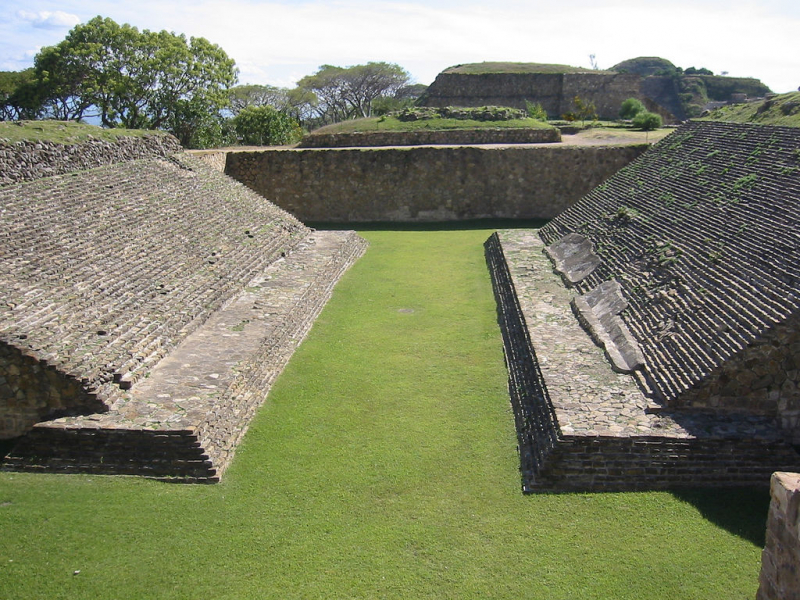
Mayan Ballcourts – Maya Dwellings 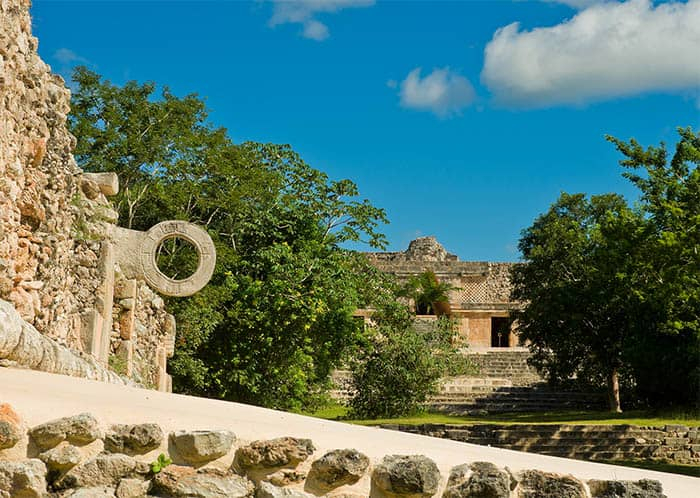
ancienthistorylists -
The Maya developed a highly precise number system. It only has three symbols: 0 (shell shape), 1 (dab), and 5. (a bar). They utilized these three symbols to denote numbers ranging from 0 to 19; numbers greater than 19 were constructed vertically in groups of 20 using place markers. As a result, the Maya adopted a base 20 or vigesimal numbering system.
Because of the usage of place markers and 0 in this system, it is very similar to the one we use today. The second position in the base-20 system was worth 20 times the value of the numeral, the third slot was worth 202 or 400 times the value, and so on. The Maya also employed shorthand to indicate large numbers, such as 2.4.1.9.9, where the numerals 2, 4, 1, 9, and 9 represent coefficients before forces of 20. Similarly, by 36 BC, the Maya had included the concept of 0 into their numerical system.
While they were not famed for their scientific achievements, they did have a working grasp of it, and many of their dates and estimates are astonishingly correct.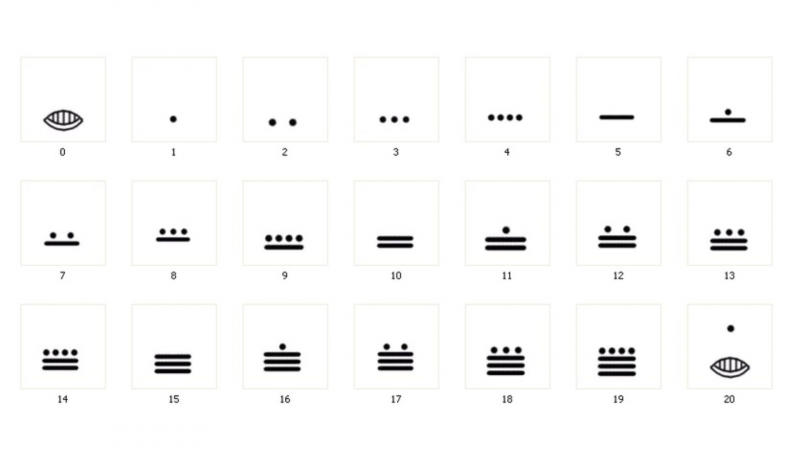
Mayan Mathematics Symbols - Wikimedia Common 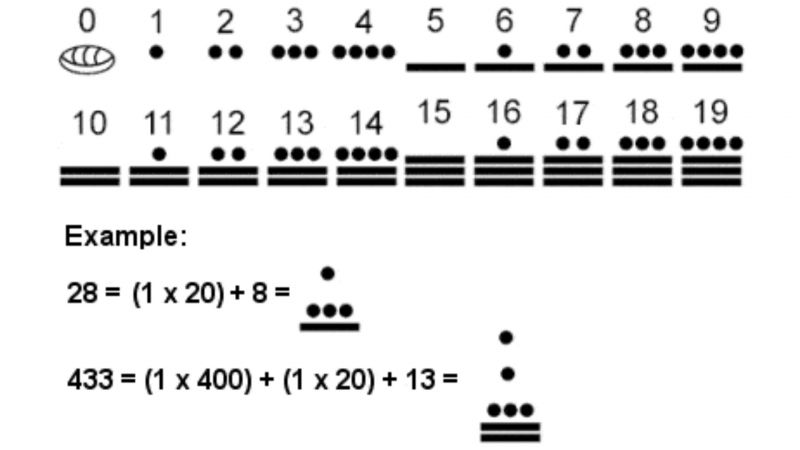
Mayan Mathematics - Numbers & Numerals - The Story of Mathematics













